For those of you who know your stuff when it comes to Volleyball, will most certainly know the name Karck Kiraly.
Karch Kiraly for those that don’t know, is widely considered one of the best Volleyball players to have ever played.
Being a pivotal component to the USA team that won gold in the 1984 & 1988 olympics to then switching to take Beach volleyball seriously and winning gold in the 1996 Olympic Games in Atlanta.
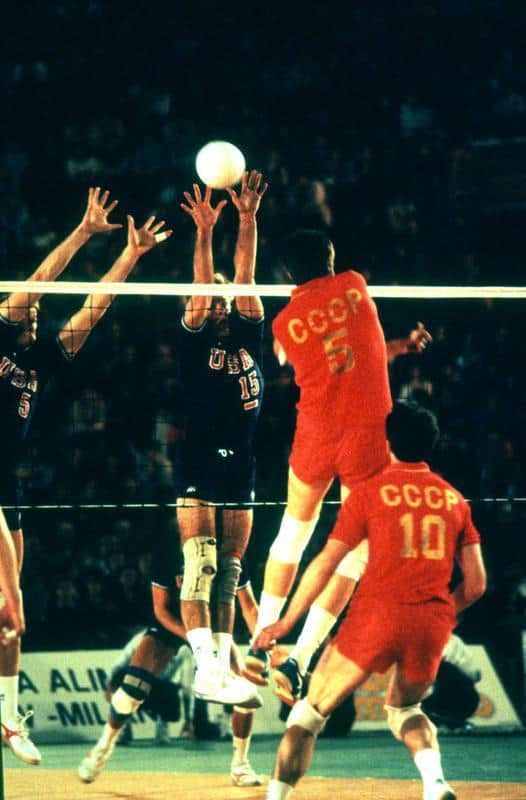
This is just the icing on a very large cake of Karch Kiraly’s dominance in the sport of Volleyball so I think it is fair to say he knows a thing or two when it comes to the sport.
Kirch Kiraly once said and I quote
“No volleyball play can begin without a serve, and the serve is the only technique that is totally under your control. In other endeavors, you cannot succeed without believing in yourself, and that belief is completely under your control.”
Now it is fair to say that this quote covers the point of self belief but it also strongly re-enforces just how vital being a good reliable server is to the sport of Volleyball.
Serving is the beginning of every rally and ultimately is the catalyst to winning any point, any set and any game.
Now all of this is lovely at telling you about just how important serving is but how do you actually do it?
To serve a volleyball overhand you should do the following:
- Stand behind the baseline with the ball in your non hitting hand
- Place the ball out in front of the centre of your body with the ball just below shoulder height.
- Next gently toss the ball straight up in front of yourself and draw your hitting arm back, like an archer pulling a bow
- Step forward into the ball whilst bringing your hitting arm forward so that your elbow points the way you’re facing.
- From this position bring your wrist over the top of your elbow and then contact the ball with the palm of your hand.
- Hit the ball just below the centre to ensure it goes slightly upwards and with enough force to reach over the net.
If the above is too much of an ask given your current experience with volleyball you may want to get comfortable serving underarm until you have a bit more experience in hitting a volleyball.
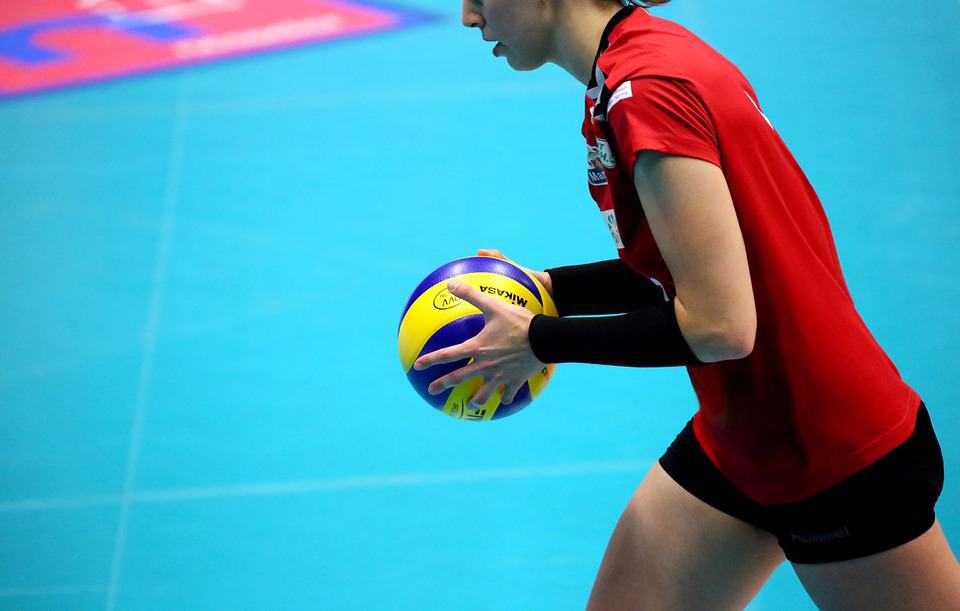
To serve a ball underarm you should do the following steps:
- Stand behind the baseline with the ball in your non hitting hand
- Stand with a staggered step ensuring whichever hand currently has the ball in is also the leg that is furthest forward.
- Lean forward slightly so that the ball can be rested in front of your hitting arm
- From this position swing your hitting arm forward towards the hanging ball and just before you are due to contact the ball gently toss the ball and move your non hitting arm.
- For additional power you may want to twist your body as you swing your arm, however, this can reduce the accuracy of the serve.
So the brief summaries in the snippet weren’t enough to get you serving with consistency?
I want to ensure that you come to this article and leave with the exact information you need to be a reliable server for your team.
Table of Contents
Detailed Guide To Underarm Serving
So if you are a beginner you will most likely want to start with the underarm serve until you have a bit more experience in hitting the ball and adjusting your hand eye coordination to suit the sport of Volleyball
Step 1

Pick up the ball and position yourself behind the service line with the ball in your non hitting hand.
Step 2
Whichever hand you have the ball in you will want to take the leg on the same side and step forwards with that leg so you have a slightly staggered approach, this will make swinging your arm and controlling the direction of the ball easier later down the line.
Step 3
Hold the ball towards the side of your body that contains your hitting arm at approximately waist height.
Step 4
Ensure you are balanced and that the ball is resting nicely in your non hitting hand
Step 5
With your hitting hand you will want to make a fist and have the flat section from your thumb and forefinger facing the direction of the ball.
Step 6
Begin swinging your hitting arm towards the ball keeping that flat section of your fist aiming dead centre of the ball.
Step 7
As your hitting hand is about to contact the ball, pull your non-hitting arm currently supporting the ball away and toss the ball slightly upwards to ensure when your hand contacts the ball it is back in the same area that you were previously holding it.
Step 8
Contact the ball in the middle just below the centre line of the ball to ensure it flies straight forwards and slightly upwards to ensure it makes it over the net
Step 9
Follow your arm swing through slightly after contacting the ball and then immediately step onto the court and get ready for the rally.
Detailed Guide To Overhand Serving
If you are naturally athletic with good hand eye coordination or you have been participating in volleyball for a little while.
You will likely want to progress to overhand serving.
Overhand serving is one of the most important skills to master in volleyball.
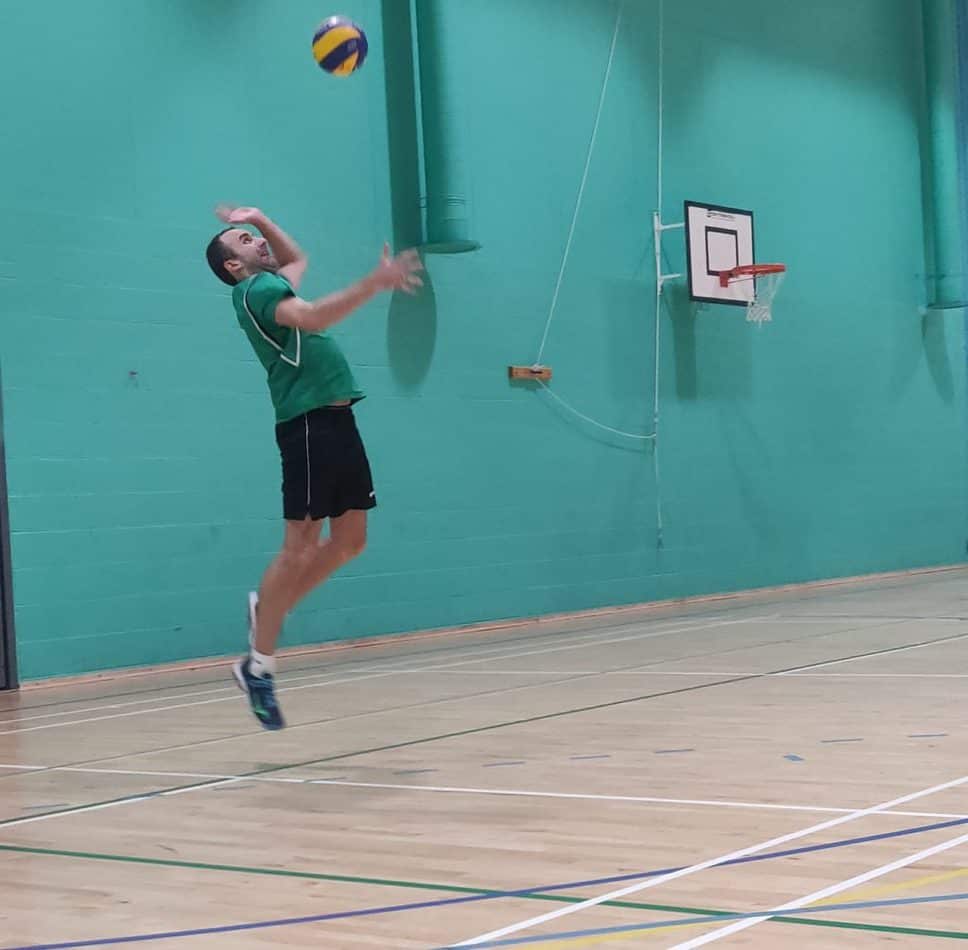
Not being able to overhand serve effectively will mean you are almost giving points away to the opposition.
However, being able to master the overhand serve can result in lots of free, easy points for your team.
So you have seen my summary points above but maybe they aren’t quite clear enough for you to dive head first into the world of overhand serving.
So with that being said let’s get going on this detailed step by step guide.
Step 1
Pick up the ball and position yourself behind the service line with the ball in your non hitting hand.
Sidenote. Some players like to use a two handed toss for overhand serving, so use whichever feels most comfortable for your.
Step 2
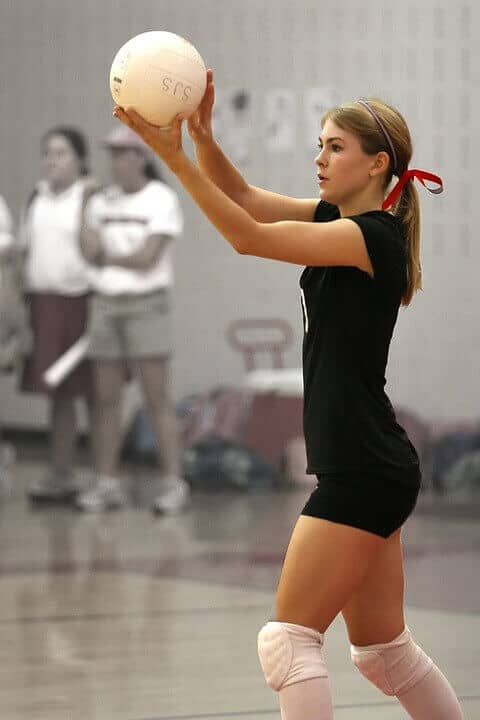
Bring the ball up to approximately shoulder height and then extend your arms slightly so the ball is located out in front of you.
Step 3
I like to stand with my feet slightly staggered as it allows me to step into the ball which generates some extra power. To do this you will want to place the foot that is on your non-dominant hitting hand slightly forward.
Step 4
Once you have positioned yourself correctly it is time to toss the ball, I have previously had sessions where we would practice only tossing the ball to get a consistent toss each time.
It is important when you toss the ball that it is not so high you lose your timing and don’t contact the ball correctly but it is not too low that you don’t have time to execute your serve correctly.
Practicing a consistent toss will save you lots of headaches later down the line.
As a general rule of thumb start by tossing the ball between 1m-2m upwards as this should allow you plenty of time to get ready and contact the ball using the correct form.
Step 5
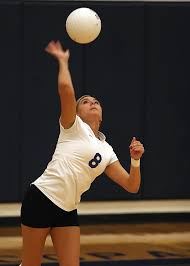
Once the ball has been tossed keeping your non-dominant hand up and out in front of you as a guide, pull your hitting arm back like an archer pulling back on a bow.
Once your arm is pulled back and you are ready to contact the ball, you should open up your shoulder so that you elbow is almost pointing forward towards the ball, begin pusing your elbow towards the ball and as you do this take your momentum step.
As your elbow begins to move past your ear you will want to bring your forearm, wrist and palm over the top of your elbow and aim to contact the ball with an open palm just in the middle just below the centre line of the ball.
This will ensure it travels forwards straight and upwards slightly to make it over the net.
Step 6
Follow through with your hitting arm to maintain power and accuracy and await feedback from the ball and your body.
Benefits of Underarm Serving
Underarm serving is the most common way in which beginners are taught to serve a volleyball, however, you very rarely or just never see an underarm serve in a high level match.
So why do we teach players to serve underarm in the first place?
Well there are actually a few different benefits to this and in fact it can even be a clever tactic when certain circumstances appear.
Confidence builder
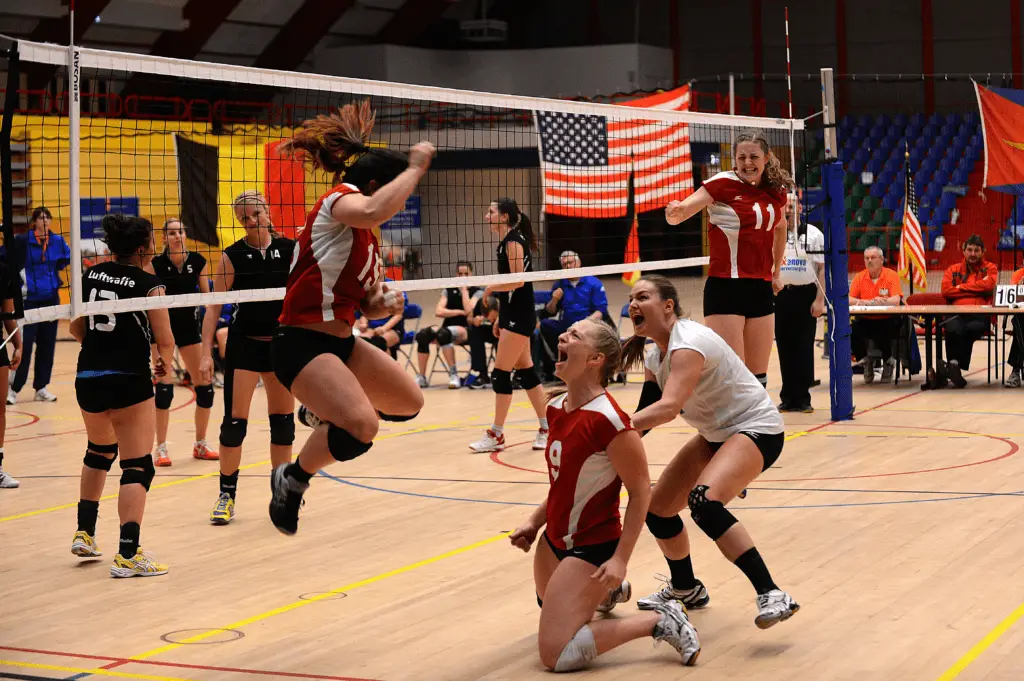
The first benefit to serving underarm is the confidence it gives new players, now I can’t speak for everyone but I remember when I first started playing volleyball and it came to my turn to serve I can remember feeling quite anxious.
I wasn’t necessarily worried about not getting the serve over, I was more concerned at how by not getting the serve over it slowed down the session which not only affected but aggravated some of my teammates.
Fortunately for me it didn’t take long for me to learn the serve and now I very rarely perform a service error.
But I can certainly see why learning to underarm serve first as it is easier can be a great confidence booster for new players who don’t want to be a burden on a session.
Aside from upsetting teammates it can also be a great confidence builder as it teaches new players the feeling of getting a serve over, when players know they do have the strength to get the ball over the net it’s amazing how quickly they pick up overhand serving.
Great For Weaker Players
Underarm serving allows players to use momentum and their body weight to assist with getting the ball over the net, overhand serving however, is much more a technical skill that requires good timing and correct form to execute.
Often when new players, young children or generally people who are not as strong, first start playing volleyball they often don’t have the strength and brute force to get the ball over with an overhand serve and as they haven’t developed the technique or timing it can be very tricky for them.
Using the underarm serve it is much easier to put more power behind the ball whilst remaining relatively accurate.
This is another reason why underarm serving is very beneficial especially for beginners or players that are not as strong.
Underarm Serving Tactic For Beach Volleyball
Now you may be surprised to see beach volleyball mentioned here and you may be even more surprised to see that I have put ‘tactic’ in the subheading.
How could underarm serving be a tactic in beach volleyball?
Well for those of you who have played beach volleyball particularly when its very windy, I think you will agree it can be a real challenge to serve precisely or at all when the wind gets up to and above 30 kmph
Serving underarm in conditions like this has some strange but major advantages.
By serving underarm not only do you allow yourself more room for error regarding contact spots but it also means the toss is much shorter meaning the wind doesn’t affect the ball as much.
As the ball is contacted from a lower position and rises towards the net the wind often doesn’t start moving the ball around too much until it reaches the net, this means it will often safely travel to and over the net before moving all over the place.
This makes it very hard for the opposition to read and even harder to get.
Try this tactic next time you play in strong winds and you might be surprised by the outcome.
Is Underarm Serving Legal

This question actually pops up a lot more than I ever thought it would.
I’m not sure where this thought process came from?
I can only assume it is due to the fact that you never see anyone opt for an underarm serve in competitive play.
However, I feel the reason for that is due to underarm serving just not being anywhere near as effective as overarm serving.
This is the only reason that springs to mind as serving underarm is certainly not illegal.
When you actually dive into a rule book you will see that the rules are rather vague.
The only rule relating to contacting the ball reads as follows:
12.4.1 The ball shall be hit with one hand or any part of the arm after being tossed or released from the hand(s).
When serving underarm the ball is tossed and or released from the non-dominant hand and then hit over with the dominant hand or arm.
When we check these things off against the rule we can see that underarm serving is perfectly legal in volleyball.
As I said I think maybe the misconception either comes from the fact it is rarely seen in competitive play or potentially down to the comment about tossing or releasing the ball as the movement happens so quickly maybe they don’t realise the ball is actually released before contact?
Whatever the reason, have no fear as underarm serving is perfectly legal.
Benefits of Overhand Serving
Overhand serving is the only serve you will likely see when watching competitive play. It is very much a high risk, high reward activity.
Like any skill based activity the more it is practiced the more consistent and effective it becomes.
Overhand serving can be tricky to master and because of this fact it can in the early stages be quite inconsistent.
As it can be tricky to learn and inconsistent in the early days why is it so important we master it?
Well overhand serving has many benefits especially when comparing it against the underarm serve.
More Aggressive Serve
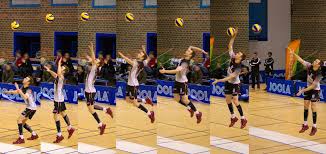
Overhand serving allows you as the server to be much more aggressive.
The reason for this is because when serving overhand you contact the ball from a much higher position, due to this we don’t need to be so concerned about getting the ball up and down whilst still making it land in the court lines.
As we are contacting it from much higher we can be more concerned with getting the ball more direct and down onto the opponent’s side.
This allows for a much more powerful and aggressive serve.
The more aggressive we get with our serves the more pressure it puts on the opposition giving them less time to react which can lead to easy points.
Easy To Disguise
Overarm serves are very easy to disguise in terms of how quick, how powerful and even which direction we are aiming the serve.
This is because all we need to do to change these things is change our arm speed at the last minute.
If we want to serve a ball short we can quickly slow down or arm swing at the last minute to contact the ball with less power, if we want to hit the ball with more speed we can speed up our arm swing at the last minute.
This small adjustment in arm speed is very hard to notice and react too in such a short time frame which makes the overarm serve very easy to disguise unlike an underarm serve where your body position and angle will quickly give your serve location away.
Manipulate The Spin on The Ball
Following on from the above concept of disguising the serve we can also easily manipulate the spin on the ball with an overarm serve where we can’t really alter the spin at all with an underarm serve.
The spin put on a ball comes from how you contact the ball and then how you use your wrist to finish your contact.
For example if we want to place top spin on the ball we need to contact the ball and then push upwards and flick our wrist over the top of the ball, this motion will create forward or top spin on the ball, this causes the ball to drop quicker than it otherwise would.
By doing similar motions in different directions using the contact and flick of our wrists we can manipulate the spin of the ball to make it tricky for the opposition to read and pass accurately.
Different Types of Overhand Serve
I was originally going to cover this in the benefits of overhand serving tab but I felt that this is such an important topic that chucking it on the end of the benefits section just wouldn’t do it justice.
There are actually 3 main types of serves that are commonly used in volleyball and depending on what you want the ball to do will determine which one you choose.
These 3 serve types are as follows:
- Standing Float Serve
- Jump Float
- Jump Topspin
Standing Float Serve
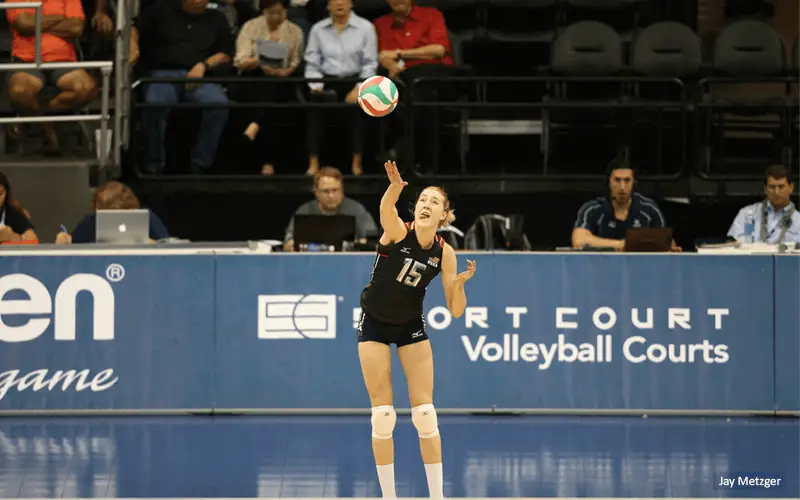
The standing float serve is a traditional serve type where you remain on the ground when serving as opposed to contacting the ball from a jumping position.
The float serve can be extremely effective as when a ball is hit flat something quite amazing happens.
As the balls are quite light and often inside halls or sports venues there are different pockets of air pressure, some denser, some thinner etc. as the ball passes through these different air pressures and pockets it can cause the ball to change direction, wobble or even suddenly drop.
The float serve is one of the trickiest serve types to receive as it can leave passers uncertain as to where exactly the ball will end up.
Standing float serves allow more time for this movement to occur as the ball must first go up and over the net before it starts dropping.
The drawback to the standing float serve is if the ball does not move or wobble much players have plenty of time to read the direction and put a perfect pass up.
Jump Float
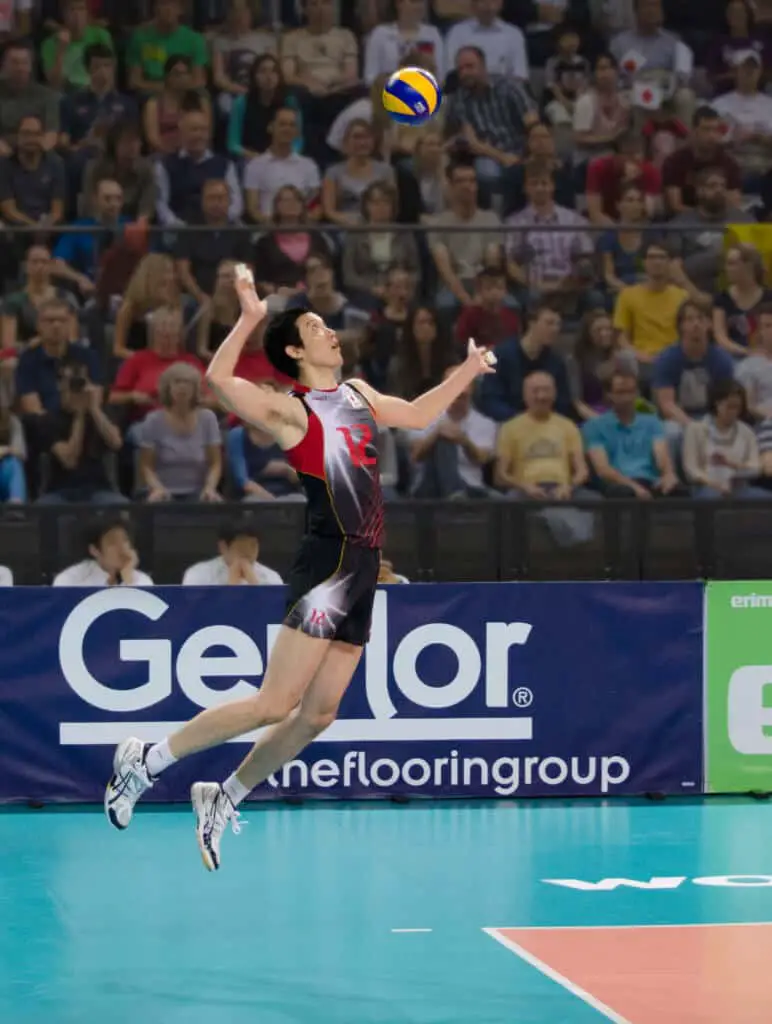
The jump float serve is exactly the same as the standing float however incorporates a jump. The reason why we might want to jump when performing a float serve is because it allows us to contact the ball from a much higher position.
By contacting the ball at a higher position we can hit the ball harder and flatter.
Jump floats can be a great way to catch out the opponent as not only do they have to compete with the ball moving changing position but the ball will also be coming at them much faster giving them even less time to react.
Jump Topspin

The last service type is the Jump Topspin serve.
This is the serve that we all aspire to be able to do, it is your traditional toss the ball up and spike it over the net from behind the service line.
The topspin serve works on the premise that you contact the ball with such power that the other team doesn’t have time to react and pass the ball in.
The topspin serve is very difficult to keep consistent and unless you master this serve it can actually be very easy to pass for the opposition.
Although you may think that hitting the ball faster would be more difficult to pass it actually quite often the opposite unless the serve is very good.
Because the serve has a lot of topspin this means the ball will fly straight from when it is contacted, although the ball will drop more quickly if the passers determine the flight path early enough, they can simply put out their passing platform and with little to no effort deliver a perfect pass to the setter.
This serve is extremely high risk, high reward.
If you want to start using this serve in matches I would highly suggest you get lots and lots and lots of repetitions in first.
